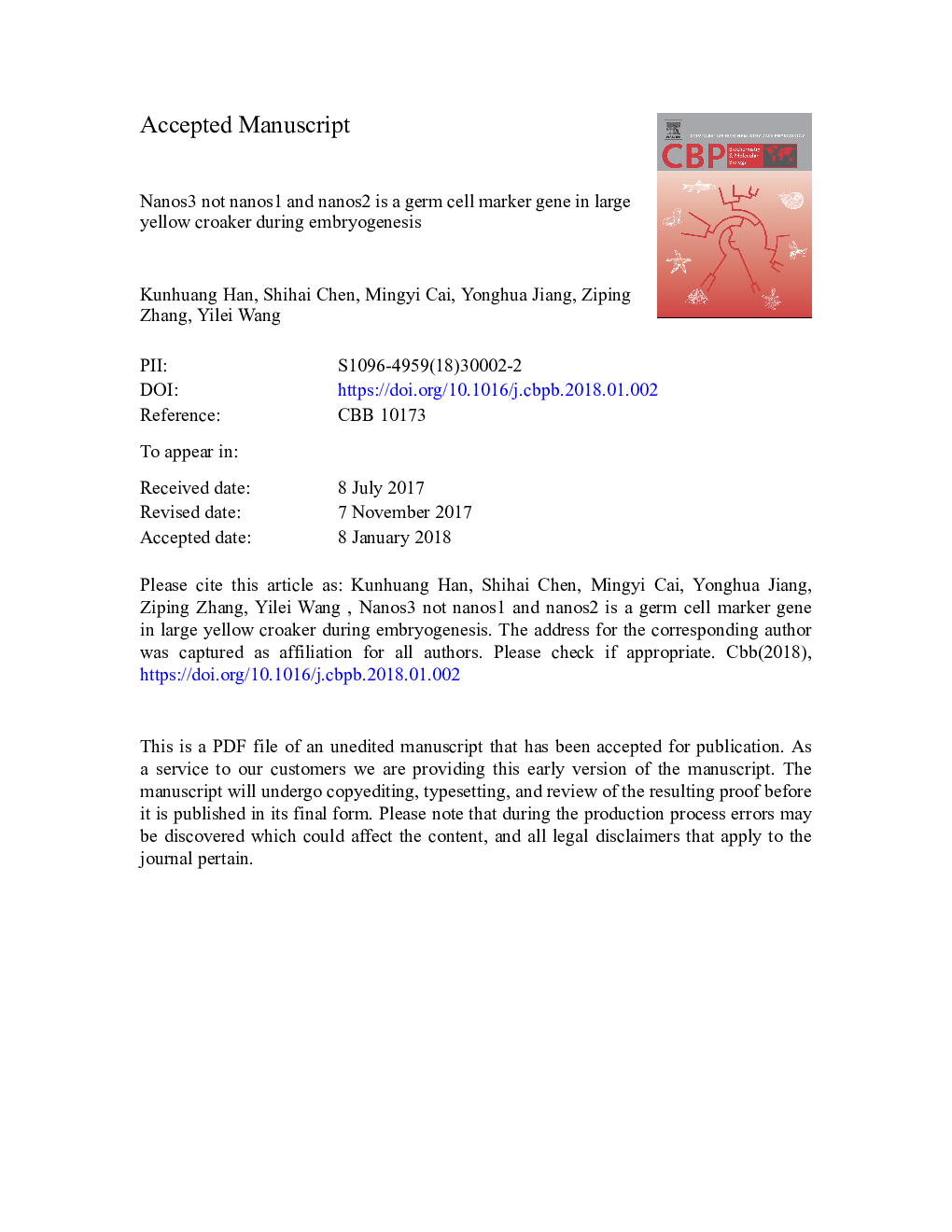| Article ID | Journal | Published Year | Pages | File Type |
|---|---|---|---|---|
| 8318822 | Comparative Biochemistry and Physiology Part B: Biochemistry and Molecular Biology | 2018 | 29 Pages |
Abstract
In this study, three nanos gene subtypes (Lcnanos1, Lcnanos2 and Lcnanos3) from Larimichthys crocea, were cloned and characterized. We determined the spatio-temporal expression patterns of each subtype in tissues as well as the cellular localization of mRNA in embryos. Results showed that deduced Nanos proteins have two main homology domains: N-terminal CCR4/NOT1 deadenylase interaction domain and highly conserved carboxy-terminal region bearing two conserved CCHC zinc-finger motifs. The expression levels of Lcnanos1 in testis were significantly higher than other tissues, followed by heart, brain, eye, and ovary. Nevertheless, both Lcnanos2 and Lcnanos3 were restrictedly expressed in testis and ovary, respectively. No signals of Lcnanos1 and Lcnanos2 expression were detected at any developmental stages during embryogenesis. On the contrary, the signals of Lcnanos3 were detected in all stages examined. Lcnanos3 transcripts were firstly localized to the distal end of cleavage furrow at the 2-cell stage. Subsequently, mounting positive signals started to appear in a small number of cells as the embryo developed to blastula stage and early-gastrula stage. As development proceeded, positive signals were found in the primitive gonadal ridge. These cells of Lcnanos3 positive signals implied the specification of the future PGCs at this stage. It also suggested that PGCs of croaker originate from four clusters of cells which inherit maternal germ plasm at blastula stage. Furthermore, we preliminarily analyzed the migration route of PGCs in embryos of L. crocea. In short, this study laid the foundation for studies on specification and development of germ cell from L. crocea during embryogenesis.
Keywords
Related Topics
Life Sciences
Biochemistry, Genetics and Molecular Biology
Biochemistry
Authors
Kunhuang Han, Shihai Chen, Mingyi Cai, Yonghua Jiang, Ziping Zhang, Yilei Wang,
